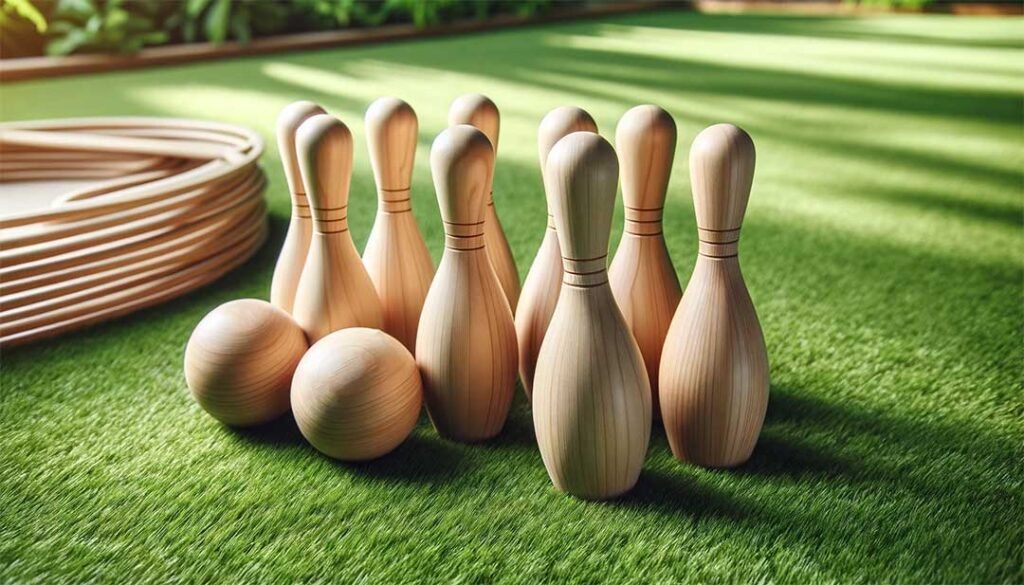Ever found yourself scratching your head over what materials go into a Number Kubb set? You’re not alone, mate. It’s a real pickle when you’re hunting for high-quality sets but keep bumping into ones that either cost an arm and a leg or just don’t cut the mustard. I get it—I’ve been in your shoes, trying to strike that perfect balance between top-notch quality and a reasonable price tag.
So, here’s the lowdown: most Number Kubb sets are crafted from hardwoods like birch, rubberwood, or even durable softwoods like pine. These materials are chosen for their heft, durability, and ability to withstand the rigors of countless backyard battles. Some savvy manufacturers are even turning to eco-friendly options like bamboo to keep things green. It’s all about finding the right wood that offers durability without breaking the bank.
But hold your horses, there’s a lot more to this wood business than meets the eye. Stick around, and I’ll dive deeper into each material, so you can make an informed choice for your next order.


Why Does the Type of Wood Matter in Number Kubb Sets?
Let’s be real—wood isn’t just wood. The type of timber used can make or break your Number Kubb experience. Hardwoods like birch and rubberwood are the gold standard. They’re dense, durable, and give you that satisfying heft that makes each toss feel just right.
On the flip side, softwoods like pine are lighter and often more affordable. They might be easier on the wallet, but they can be a bit more prone to wear and tear. That said, for casual play or if you’re catering to a budget-conscious crowd, pine isn’t a bad shout.
What’s the Deal with Eco-Friendly Materials?
In today’s world, who isn’t keen on going green? Materials like bamboo are making waves in the Number Kubb scene. Bamboo grows faster than traditional woods, making it a sustainable choice. Plus, it’s surprisingly sturdy!
But remember, while eco-friendly materials are great for Mother Earth, they might come with a slightly higher price tag or different aesthetic. It’s all about knowing your audience and what they’re after.
How Do Finishes and Treatments Impact Quality?
You might think raw wood is all you need, but hold up. Finishes and treatments play a crucial role in the longevity and appearance of your Number Kubb sets. Applying natural oils or lacquers can protect the wood from moisture, UV rays, and general wear and tear.
Some suppliers might skimp on this step to save costs, but trust me, it’s worth investing in properly treated sets. Not only does it enhance durability, but it also gives the wood a nice sheen that customers appreciate.
Are There Any Certifications to Look Out For?
Quality isn’t just about the wood; it’s also about meeting certain standards. Certifications like FSC (Forest Stewardship Council) ensure that the wood used comes from responsibly managed forests.
For clients like Andy, who value both quality and ethical sourcing, these certifications can be a big selling point.
How Can You Ensure Consistent Quality from Suppliers?
Here’s the kicker—no matter how good the material, if the supplier isn’t up to snuff, you’re in for a world of hurt. Delayed deliveries, inconsistent quality, and poor communication are nightmares you don’t need. Working directly with manufacturers who have a proven track record and can provide quick responses is key. Don’t be shy about asking for samples or references.
Conclusion
At the end of the day, knowing what materials are used in Number Kubb sets can save you a ton of hassle and help you deliver the best products to your customers. Whether it’s choosing between hardwoods and softwoods, considering eco-friendly options, or ensuring your sets have the right finishes and certifications, a little knowledge goes a long way. And hey, if you ever need a hand or want to chat about getting top-quality Number Kubb sets, you know where to find me!










